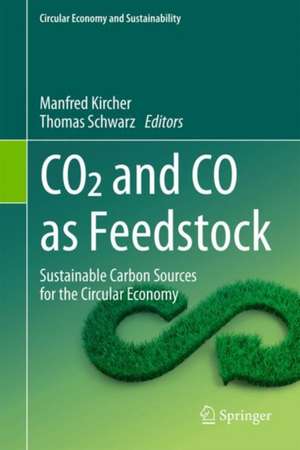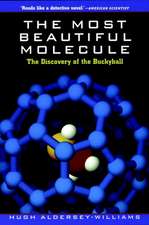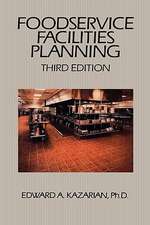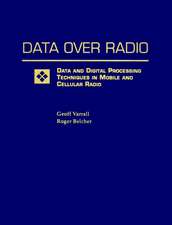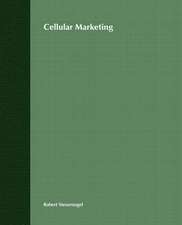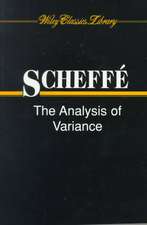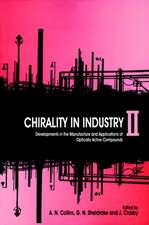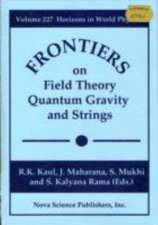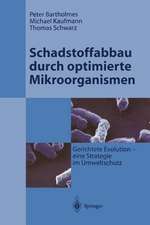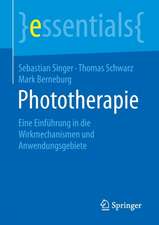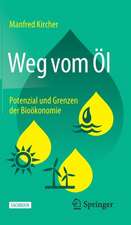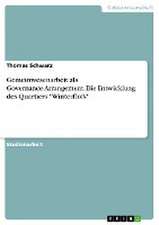CO2 and CO as Feedstock: Sustainable Carbon Sources for the Circular Economy: Circular Economy and Sustainability
Editat de Manfred Kircher, Thomas Schwarzen Limba Engleză Hardback – 20 ian 2024
This book describes the basics of chemical and biotechnological processes for converting CO and CO2 into chemicals and fuels. Furthermore, it addresses potentials for the manufacturing economy, industrial sites and regions and answers the following questions.
- Which emission and gas streams offer feedstock potential?
- What processes are already implemented, being tested and under development?
- What products can be made from gaseous carbon sources?
- How can carbon emitting and consuming industries be linked into new value chains?
- What is the regulatory framework?
- What does the ecological footprint look like?
- How do the new processes contribute to the regional economy and thus to social acceptance among consumers and among decision-makers in companies and politics?
Preț: 797.41 lei
Preț vechi: 972.46 lei
-18% Nou
Puncte Express: 1196
Preț estimativ în valută:
152.60€ • 165.70$ • 128.19£
152.60€ • 165.70$ • 128.19£
Carte disponibilă
Livrare economică 01-15 aprilie
Preluare comenzi: 021 569.72.76
Specificații
ISBN-13: 9783031278105
ISBN-10: 3031278100
Pagini: 420
Ilustrații: VII, 420 p. 111 illus., 89 illus. in color.
Dimensiuni: 155 x 235 mm
Greutate: 0.89 kg
Ediția:1st ed. 2023
Editura: Springer International Publishing
Colecția Springer
Seria Circular Economy and Sustainability
Locul publicării:Cham, Switzerland
ISBN-10: 3031278100
Pagini: 420
Ilustrații: VII, 420 p. 111 illus., 89 illus. in color.
Dimensiuni: 155 x 235 mm
Greutate: 0.89 kg
Ediția:1st ed. 2023
Editura: Springer International Publishing
Colecția Springer
Seria Circular Economy and Sustainability
Locul publicării:Cham, Switzerland
Cuprins
CO2 and CO: sustainable carbon sources for circular value creation.- CO2: Sources and volumes.- Conventional processes for hydrogen production.- Alternative biological and biotechnological processes for hydrogen production.- Production of synthesis gas.- Chemical-catalytic conversion of CO2 and CO.- Microbial processes: Biocatalytic conversion.- Microbial processes for the conversion of CO2 und CO.- Microbial processes: Current developments in gas fermentation.- Microbial processes: Production of polyhydroxyalkanoates from CO2.- Microbial processes: Photosynthetic microalgae.- Challenges in down streaming from chemical and biotechnological processes.- Utilization of C1 gas streams from steelworks.- Utilization of C1 gas streams from cement plants.- Utilization of C1 gas streams form power plants.- Utilization of C1 gas streams from chemical processes.- Utilization of C1 gas streams from bioprocesses including biogas plants.- Utilization of residuals and C1 gas streams: Organic waste, sludge and agricultural residuals.- Utilization of residuals and C1 gas streams: Pyrolysis process of Concord Blue.- Utilization of residuals and C1 gas streams: CO2 sources in agriculture.- Recycling CO2 from waste incineration closes carbon cycles.- Utilization of C1 gases: Impact on sustainability.- Regional Development.- Utilization of C1 gases: The regulatory framework.- R&D&I and industry examples: Challenges and opportunities in scaling up.- R&D&I and industry examples: Covestro’s Dream Production.- R&D&I and industry examples: LanzaTech’s gas fermentation.- R&D&I and industry examples: The CCU project Carbon2Chem.- R&D&I and industry examples: The CO2 electrorefinery - a new concept for carbon dioxide (CO2) capture and utilization (CCU).-R&D&I and industry examples: The vision of b.fab GmbH.- R&D&I and industry examples: Industrial gases as a carbon source for terpene production.- ZeroCarbFP: A two-step microbial conversion of CO2-rich off-gas into valuable products.- Introduction.- R&D&I and industry examples: Ineratec’s ICO2CHEM project to utilize CO2.- Piloting, scale-up, and demonstration.- Final evaluation and summary.
Notă biografică
Dr. Manfred Kircher, freelance consultant (KADIB - Kircher Advice in Bioeconomy), Member of the Board of BioBall e.V. (Bioeconomy in Metropolitan Regions) and Chairman of the Advisory Board of CLIB-Cluster e.V. (Cluster Industrial Biotechnology)
Dr. Thomas Schwarz (†) , Chief Scientific Officer of bitop AG and Chairman of the Board of CLIB-Cluster e.V. (Cluster Industrial Biotechnology)
Textul de pe ultima copertă
Climate protection and raw material change require new, sustainable carbon sources for the chemical and fuel industries. In fact, processes that recycle carbon-containing emission and gas streams industrially are reaching industrial practice. They will make an important contribution to reducing carbon emissions and moving towards a true carbon circular economy.
This book describes the basics of chemical and biotechnological processes for converting CO and CO2 into chemicals and fuels. Furthermore, it addresses potentials for the manufacturing economy, industrial sites and regions and answers the following questions.
The Editors
Dr. Manfred Kircher, freelance consultant (KADIB - Kircher Advice in Bioeconomy), Member of the Board of BioBall e.V. (Bioeconomy in Metropolitan Regions) and Chairman of the Advisory Board of CLIB-Cluster e.V. (Cluster Industrial Biotechnology)
This book describes the basics of chemical and biotechnological processes for converting CO and CO2 into chemicals and fuels. Furthermore, it addresses potentials for the manufacturing economy, industrial sites and regions and answers the following questions.
- Which emission and gas streams offer feedstock potential?
- What processes are already implemented, being tested and under development?
- What products can be made from gaseous carbon sources?
- How can carbon emitting and consuming industries be linked into new value chains?
- What is the regulatory framework?
- What does the ecological footprint look like?
- How do the new processes contribute to the regional economy and thus to social acceptance among consumers and among decision-makers in companies and politics?
The Editors
Dr. Manfred Kircher, freelance consultant (KADIB - Kircher Advice in Bioeconomy), Member of the Board of BioBall e.V. (Bioeconomy in Metropolitan Regions) and Chairman of the Advisory Board of CLIB-Cluster e.V. (Cluster Industrial Biotechnology)
Dr. Thomas Schwarz (†), Chief Scientific Officer of bitop AG and Chairman of the Board of CLIB-Cluster e.V. (Cluster Industrial Biotechnology)
Caracteristici
Explains the various sources of CO2-emissions Explains chemical and biotechnological processes for transforming CO2 and CO into chemicals Explains cross-sectorial synergies in the use of CO2 and CO
